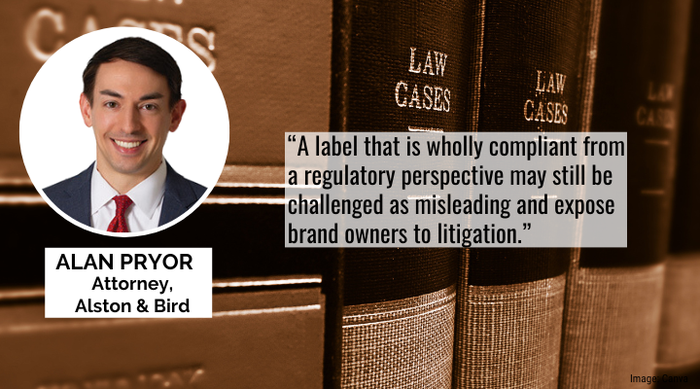Truth in Packaging: Legal Insights for RTD Alcohol Labels
A packaged ready-to-drink (RTD) alcohol beverage’s impression matters more than truthfulness or intent from a legal view, according to attorney Alan Pryor of Alston & Bird.
August 7, 2023

Consumers worldwide have a growing thirst for the convenience of packaged, premixed drinks containing alcohol. According to a report by InsightAce Analytic, the global ready-to-drink (RTD) alcohol market valued at $36.42 billion in 2022 is forecast to grow 11.2% yearly to 2030.
It’s a market closely followed by attorney Alan Pryor, a member of Alston & Bird’s Food & Beverage Industry Team.
“My practice involves consumer class action work, particularly in the alcohol, food, and beverage space,” Pryor tells Packaging Digest. “I also counsel global alcohol producers regarding regulatory and litigation exposure and strategies for their ready-to-drink (RTD) product labeling.”
It’s helpful to know precisely what products fall into the RTD alcohol category, however Pryor admits the definition is elusive.
“It’s hard to capture exactly what falls in the ‘ready-to-drink’ market,” he says. “Traditionally, RTDs referred to hard seltzers and spirits-based cocktails. But the lines between distinct alcohol categories — for example, distilled spirits, wine, and beer — have blurred. From canned margaritas to sangrias and mimosas to cheladas, most prepared alcohol beverages now fall under the RTD category. As the alcohol industry continues to innovate, the RTD category is limited only by brand managers’ imaginations.”

One thing that’s clear is that legal concerns in this market are active and growing. What's less clear is who’s responsible for regulatory oversight.
“It can quickly become messy determining who regulates what RTD products, whether that’s the Alcohol and Tobacco Tax and Trade Bureau (TTB) or the FDA,” Pryor explains, “not to mention state regulators, and ensuring those products check the correct regulatory boxes. Litigation in this space only complicates the legal environment. Food and beverage litigation has grown significantly in the past few years, with more than 200 class action lawsuits filed in 2022 alone. The alcohol industry is an increasingly popular and visible target for these suits.”
Truth 1: Impression trumps truth in labeling.
We solicited Pryor for guidance for brands and packaging designers working in this space. He offers two fundamental truths.
“A hard, but important lesson is that it does not necessarily matter what message a brand owner intended with its product labeling, or even that everything on a product label is truthful, but rather the overall impression that label conveys to reasonable consumers,” Pryor responds. “A label that is wholly compliant from a regulatory perspective may still be challenged as misleading and expose brand owners to litigation.”
Truth 2: Branding is of paramount importance.
“Branding matters, even in the litigation context,” Pryor says. “There was a recent suit where the court rejected the defense that the labeling was truthful. It concluded that the overall impression created by the branding and packaging on a cinnamon-flavored alcohol product — the font, coloring, bottle shape, trade dress, and, yes, the fire-breathing dragon logo — could mislead consumers into thinking that smaller, convenience store bottles contained whisky just like their larger, similarly branded cousins sold at liquor stores. The truth is that they don’t. At least for that court, branding can influence consumers’ expectations and whether they are deceived.”
This advice is applicable to all food and beverage markets.
“Brand owners from both the RTD market and the traditional food and beverage space should keep these considerations in mind,” Pryor points out. “We’ve seen the same law firms leveraging their playbook for food and beverage class actions to challenge RTDs and other alcohol beverages…and with some success. Frequently, brand owners have little trouble with the express claims on their products. Spotting and managing the other messaging, however, can be harder, particularly as brand owners develop and introduce new products.”
Prevention advice for brands.
Pryor offers parting guidance for brands.
“No doubt, brand owners face difficult choices in branding and with their labeling,” he says. “But compliant, low-litigation risk, and marketing-department-friendly labeling exists, and an ounce of prevention often is better than a pound of cure."
Brand owners should consider the following advice from Pryor:
Formalize the label review and approval process so that the marketing and legal teams work together rather than against one another.
Track current trends in the regulatory and litigation landscape to identify higher risk claims before their RTD products become targets of false labeling litigation.
Use disclaimers and qualifying language on the consumer-facing packaging, which may discourage prospective litigants from filing suit and strengthen the legal defenses even if a lawsuit is filed.
You May Also Like


